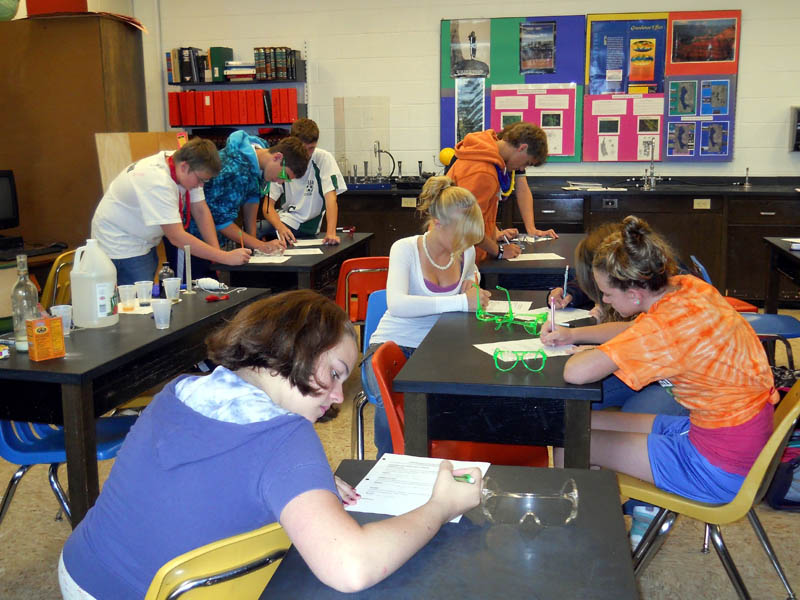NORTH ANSON — The teachers and students at Carrabec High School are participating in a real-world experiment to see if they can find ways to reduce energy use.
The project relies on the houses of 10 anonymous teachers, monitors that measure the wattage used by specific appliances in each home, and the school’s roughly 60 freshmen who are analyzing the data to figure out how best to cut their teachers’ electricity bills.
The goal is to put science to use in the real world and teach students where electricity comes from, how much it costs and how to measure the resulting carbon dioxide emissions, science teacher Susan Hellewell said.
The students are still interpreting the information and plan to share their results about how to reduce energy use at a project presentation from 6-7:30 p.m., on Tuesday, April 24, at the high school.
Students began collecting data from the monitors in November, Hellewell said. Each device submits its information to a website that shows how much electricity each appliance is using, at what times of day the usage peaks and how much carbon is being created by each appliance.
For example, the website shows that in one teacher’s house a dryer is responsible for about 1,657 pounds of carbon emissions per year.
To offset the emissions, the program estimates that about 3.68 acres of forest are needed to absorb that amount of carbon emissions.
In another house, it’s clear that electricity usage is greatest around 8 p.m. The program projects a total monthly bill for the house of about $50. It shows that the dryer is using the most electricity, followed by the refrigerator, electric range and furnace.
Another home is creating 525 pounds of carbon per month, which is greater than Maine’s average carbon footprint of 483 pounds per month, the website shows. That person’s monthly electric bill is around $75, and the major electricity user is a water heater.
Student Kilee Nile, 14, of Solon, said she likes being able to see the break-down of each appliance and is looking forward to setting specific ways to help reduce electricity usage.
“It gives you a good look at how much energy people use and how much it usually costs,” she said.
She added, “I think it was a good visual experience rather than just learning it from a textbook.”
The project is called Maine Saves Energy: A Guide to Student-Led Investigations Using Real-Time Electricity Monitoring.
It is part of a larger curriculum developed by the Maine Mathematics and Science Alliance and was funded with $1,600 from the Maine Community Foundation.
Last summer, Hellewell and nine other teachers from around Maine took a course from Lynn Farrin, of the alliance, and physics professor Paul Stancioff, at the University of Maine at Farmington to learn more about how to teach “science as practice,” she said.
In addition to students collecting and analyzing data, she said she wants them to work across subjects. That’s why they have paired their science lessons with ones from math teacher Hal Larlee that included making graphs and pie charts. Hellewell plans to do the project again next year.
Erin Rhoda — 612-2368
erhoda@centralmaine.com
Send questions/comments to the editors.



Comments are no longer available on this story